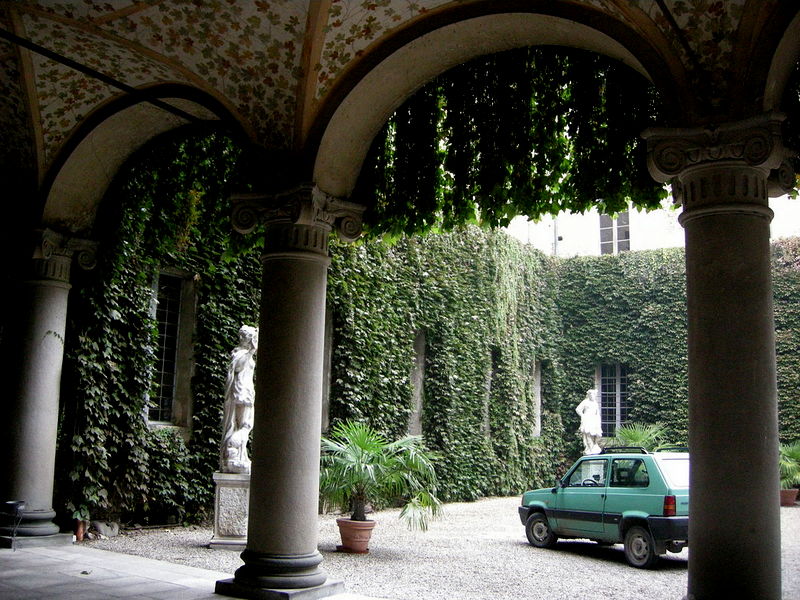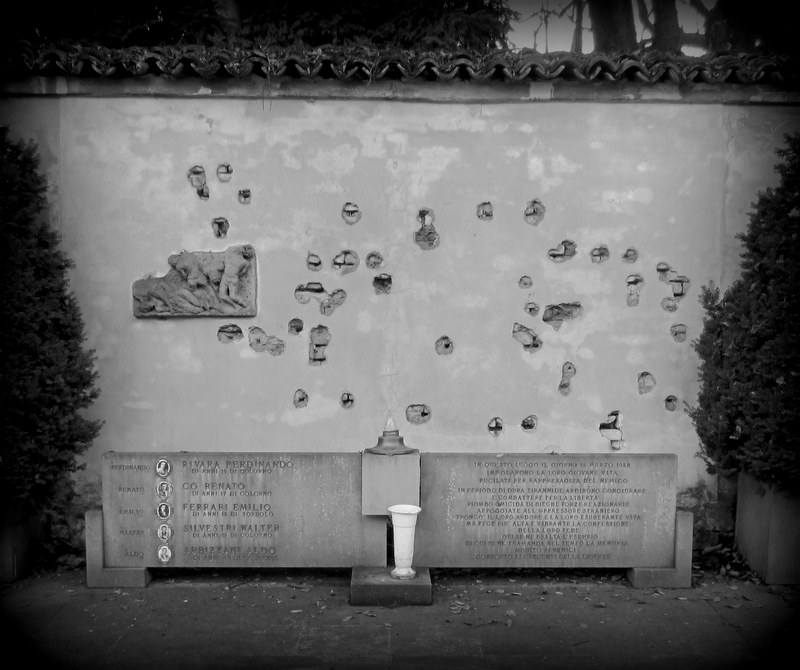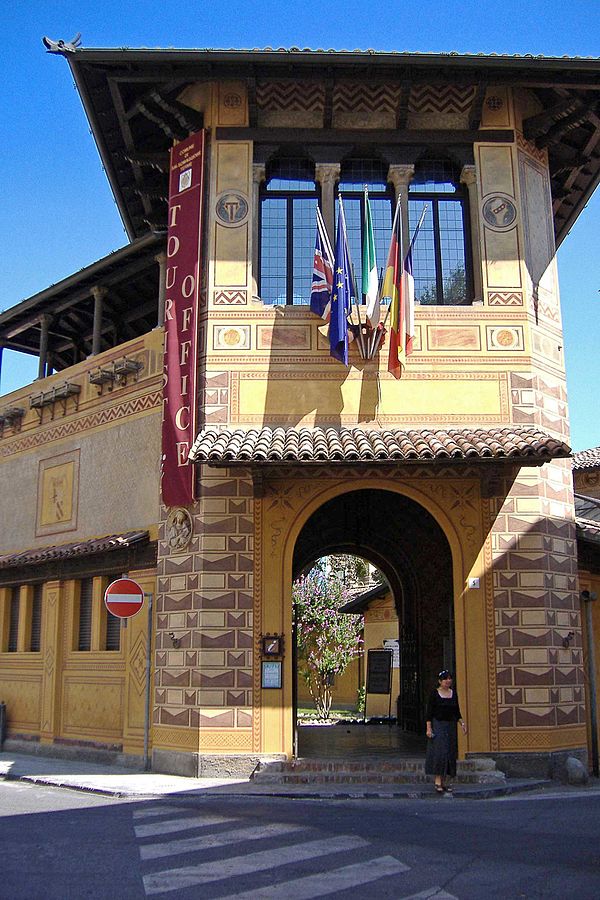Exploring The Parmense Posted by Serena on Nov 11, 2016 in Uncategorized
We’re still here in Salsomaggiore Terme, in front of the imposing Art Nouveau Terme Berzieri. Geoff is sitting on a bench, recovering from the tortuous drive. I make an effort to look at the building: “Com’è brutto! Perché fai finta che ti piace?” Geoff asks me. Geoff, who usually likes Stile Liberty, finds the building heavy and clumsy. Spectacular in its own way, but “davvero pesante e brutto!”.
A Relaxing Trip – Part 2 (you can find Part 1 in Here)
After a quarter of an hour Geoff eventually starts to regain some enthusiasm for our day out (poverino!) and I manage to drag him to a caffè for a hot cappuccino and a slice of torta. Not that his bad humour has completely passed yet: “Questa torta non sa di niente, il cappuccino è blando … uffa, che musica noiosa!” and so on. I apologise for my bad choice of route, and we decide to make the most of what’s left of the day.
“Andiamo all’Ufficio Turistico” says Geoff, and we walk to the nearby Tourist Information Office, a pretty Art Nouveau building, much more to Geoff’s taste. “Questo è lo Stile Liberty che piace a me” he says. Finally, something positive! Here two helpful young ladies provide us with an array of information and leaflets about nearby places to visit. We notice that they both speak with la ‘r’ moscia, a guttural, French sounding sounding ‘r‘ which is characteristic of the local accent. We continue to hear this ‘r‘ all day.
With the help of the staff in the Ufficio Turistico we choose two small towns which are not too far from our chosen route home. But first we have to work out how on earth to get out of Salsomaggiore. We are quickly swallowed up by Salsomaggiore’s one way system, but we’re old hands at dealing with Italian traffic ‘systems’, and Geoff quickly gives up on map reading and trying to make sense of convoluted segnaletica stradale choosing to follow his inner compass instead: “Questa è la strada giusta, ne sono sicuro”, he declares. We are on the right road!
After several kilometres, and more roundabouts and shopping malls that I care to remember, we reach our first destination, Soragna. “Questo sì che meritava il viaggio … è bellissimo!”

The lovely courtyard of la rocca di Soragna, complete with its own ubiquitous FIAT Panda. This photo from Wikipedia was taken in 2010. The exact same Panda was parked there last week in a slightly different position! Photo CC by Sailko
Leaving the car just outside town, we walk along a tree-lined avenue and arrive at Soragna’s ancient town gate. Within, we find a beautiful little walled town, with una rocca (fortress) surrounded by un fossato (a moat), which I’m disappointed to see doesn’t contain crocodile infested water. We cross the bridge over the now dry moat and peep through the metal gate: “Guarda com’è stupendo il cortile circondato dal loggiato tutto affrescato!” The fortress, which was built in 1385, is now a private mansion, but can be visited in the afternoon.
We wander around Soragna for a while, admiring the incredible variety of pastel colours that have been applied to the houses and shops, then we find a bench in a small park where we eat our panini al formaggio. Passing once more through the town on the way back to the car, we discover an unusual war monument: il monumento a ricordo dell’eccidio di Soragna (Monument to the memory of the massacre of Soragna). Here, on the night of the 17th and 18th of March 1945, the Italian fascist Brigata Nera executed five young partisans in reprisal for a recent anti-fascist attack.

Simple but moving: a plain cement covered wall pocked by the bullets that killed the young victims has been left as it was in 1945.
We’re Back in the car again, and after only 8 kilometres of flat pianura landscape we arrive in Fontanellato, another beautiful walled town with its own fortress. This time, I’m pleased to find that il fossato is still filled with water (although rather stagnant and green). A large flock of pigeons circles la rocca which now houses the Council offices and, importantly for us, the public toilets. The classic gabinetti alla turca (Turkish style toilets, basically a piece of porcelain on the floor with a hole in it over which one is obliged to squat) are surprisingly clean!
So, there you have it, two pretty little provincial towns close to Parma and the A1/E35 motorway, that are well worth a visit. If you happen to go there, listen out for the accent, especially that ‘r’ moscia. Rumour has it that there are other similar towns to discover in this area. When we find them, you’ll be the first to know.
A presto cari lettori.

Build vocabulary, practice pronunciation, and more with Transparent Language Online. Available anytime, anywhere, on any device.






Comments:
Mariagianna:
Grazie. Fantastico! I read your posts every day. I feel like I know you now.
Geoff:
@Mariagianna Grazie per il tuo gentile commento Mariagianna.
A presto 🙂
Rosalind:
Queste piccole città (e ce ne sono tante) sono il tesoro d’Italia. A spesso sono sconosciute e rappresentano ciò che mi attrae sempre una volta di più verso l’Italia. Per fortuna non sono troppo lontana.
The name Fontanellato rang a bell. It is the town to which Wanda Newby’s family was moved ( from near Trieste) and where she met her future husband Eric Newby. I can’ t approve his story of escape because he put too many lives at risk.
Renata:
Great, educational post (and not only this one), really fun to read. Looks like you have a natural talent for writing. Pity it is not bilingual, I could practice my italian as well. Anyway, I adore your blog, there are posts I read so often that I already know them by heart:-). Thank you / Grazie Geoff & Serena
Serena:
@Renata Grazie Renata!
Paolo:
‘Pock-marked’ rather than ‘pocked’ would be better usage
in the way the word is used above.
Geoff:
@Paolo Secondo te? 😉